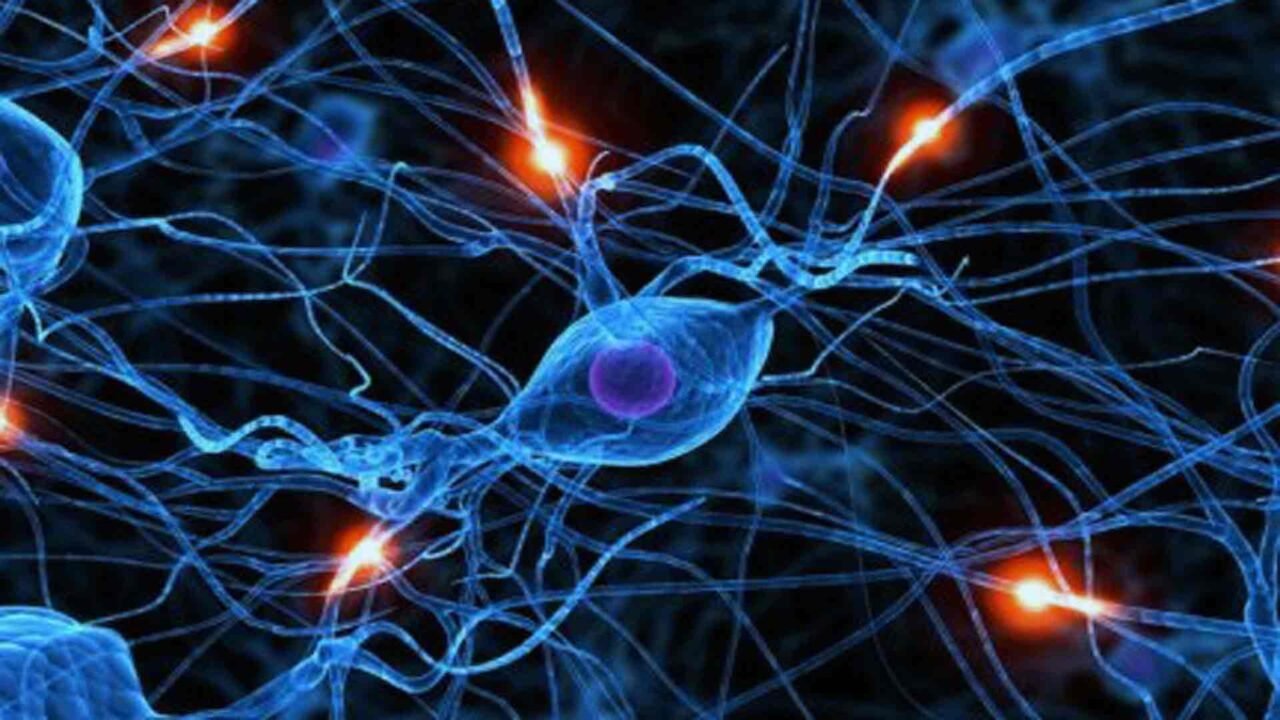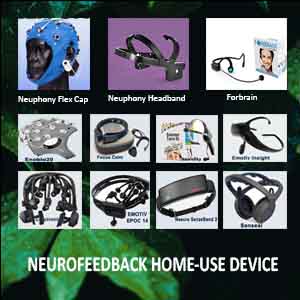BRAIN NEUROPLASTICITY FROM NEUROFEEDBACK PERSPECTIVE
Until recently, scientists believed that once the human brain is fully matured in one’s mid-twenties, no new brain cells (neurons) are produced (that is, no further “neurogenesis”). For many decades, scientists believed the brain’s wiring was fixed for life and lacked neuroplasticity. They thought the brain was a “nonrenewable organ,” with a finite number of brain cells that slowly died as we aged, regardless of our efforts to preserve them. Over the past few decades, groundbreaking research has established the contrary conclusion: You continuously grow new neurons in certain parts of your brain and constantly re-wire the connections and networks in your brain throughout your life. This feature of the brain is called Neuroplasticity. Brain Neuroplasticity and Neurofeedback are in a causal relationship. The Brain Plasticity and Neuroplasticity is the key factor on which based Neurofeedback training/therapy.
Using Brain Neuroplasticity and Neurofeedback technology with attention and intention, you can physically re-wire your brain to serve your goals better and to become your ideal self. Moreover, using the neuroplasticity feature of your brain with Neurofeedback technology, you can recover from many pathological states and disorders.
Table of Contents
Toggle- BRAIN NEUROPLASTICITY FROM NEUROFEEDBACK PERSPECTIVE
The Evolution of Neuroplasticity
The term “neuroplasticity” was first used by Polish neuroscientist Jerzy Konorski in 1948 to describe observed changes in neuronal structure. It wasn’t widely used until the 1960s, but the idea goes further. The pioneer of neuroscience, Santiago Ramón y Cajal, talked about “neuronal plasticity” in the early 1900s. He recognized that brains could indeed change after a person had reached adulthood. This research discovered that brain cells can die through various mechanisms. It also revealed other methods for brain cells to adapt and reconnect, possibly even ways to regrow or replenish. Today, this is known as “neurogenesis.”
In the 1960s, it was discovered that neurons could “reorganize” after a traumatic event. Further research found that stress can change the functions and structure of the brain itself. In the late 1990s, researchers found that stress can kill brain cells. However, these conclusions are still not entirely clear.
Understanding Brain Neuroplasticity
Thus, Brain Neuroplasticity refers to the physiological changes in the brain that happen due to our interactions with our environment. From the time the brain begins to develop in utero until the day we die, the connections among the cells in our brains reorganize in response to our changing needs. This dynamic process allows us to learn from and adapt to different experiences. Neuroplasticity is the ability of the brain to change and reorganize itself and its function.
It gives us a brain that can adapt to damage and any experiences and changes we encounter. This adaptability allows us to go beyond reflexive responses shaped by genetic hardwiring.
Neuroplasticity enables our brains to constantly adapt and change by forming new neural connections and discarding unused pathways. This ability is crucial for adapting to significant environmental changes, such as traumatic injuries. Healthy nerve cells seek out new connections to compensate for damage and restore function. Additionally, everyday experiences, thoughts, emotions, and behaviors influence our brain’s functions. They continually strengthen the neural connections we frequently use while weakening those we do not.
The Impact of Daily Experiences on Neural Pathways
As you develop cognitive and behavioral patterns, you create and reinforce specific neurological pathways. By repeatedly using these pathways, they become ingrained and automatic, eventually becoming second nature. Neural pathways function as roads between points of interest in the brain and nervous system. Each time you think, feel, or act, you forge a new mental path and strengthen that neural pathway. Frequent use of a pathway strengthens it. Conversely, pathways that are used less often gradually weaken over time.
UNDERSTANDING OF NEUROPLASTICITY AND NEUROGENESIS
Key Concepts of Neuroplasticity and Neurogenesis
Brain plasticity or neuroplasticity is the inherent capacity of nerve tissue to form new interneuronal connections or synapses (synaptogenesis) or replace useless, nonfunctional (neurodegeneration) neurons in the brain with new neurons (neurogenesis). Although related, neuroplasticity and neurogenesis are two different concepts.
Neuroplasticity is the brain’s ability to form new connections and pathways and change how its circuits are wired, while neurogenesis is the brain’s ability to grow new neurons.
Neuroplasticity and neurogenesis may open up new frontiers in the treatment and prevention of dementia, recovery from traumatic brain injuries, and other areas we probably haven’t even thought of.
Types and Impact of Neuroplasticity
What we do know right now is that there are two main types of neuroplasticity:
- Structural neuroplasticity changes the strength of the connections between neurons (or synapses).
- Functional neuroplasticity describes the permanent changes in synapses due to learning and development.
Synaptic plasticity is the ability to change synaptic strength. Changes in the strength include neurotransmitters. Neuroplasticity comprises an essential neurochemical basis of learning and memory. The effect of neuroplasticity is to reorganize the functions of neurons to permit rapid adaptation and self-repair, which may translate into learning and memory processes at all levels of the nervous system. It also comprises the intrinsic excitability of a neuron with influences on information storage.
The average human brain has about 100 billion neurons. Each neuron may be connected to up to 10,000 other neurons, passing signals to each other via as many as 1,000 trillion synaptic connections, equivalent by some estimates to a computer with a 1 trillion bit per second processor. Every neuron maintains a voltage gradient across its membrane due to metabolically-driven differences in sodium, potassium, chloride, and calcium ions within the cell, each of which has a different charge. If the voltage changes significantly, an electrochemical pulse called an action potential (or nerve impulse) is generated. This electrical activity can be measured and displayed as a waveform called brain wave or brain rhythm.
Neuroplasticity is a superpower you possess and can be used to shape your reality. We now recognize the brain as an extraordinarily dynamic organ that continues to develop in response to environmental stimuli throughout our lives. In other words, our emotions, behaviors, experiences, and thoughts physically change how our brain functions.
Negative and positive brain neuroplasticity
But the brain is neutral and doesn’t know the difference between good and evil. It learns what is repeated—helpful and unhelpful thoughts, actions, and habits. Therefore, neuroplasticity may entrench depressive, anxious, obsessive, and overreactive patterns. Neuroplasticity isn’t wholly good, of course. For example, Depression is often associated with negative neuroplasticity—plasticity that establishes unpleasant thought patterns, not beneficial ones.
There are two types of brain plasticity.
Negative brain neuroplasticity
Negative brain plasticity promotes unhealthy brain functioning. It causes changes to the neural connections in the brain, which can be harmful. For example, negative thoughts can promote neural changes and connections associated with conditions such as depression, anxiety, and panic attacks. Also, the overuse of drugs and alcohol enhances negative plasticity by rewiring our reward system and memories.
Positive brain neuroplasticity
This type of brain plasticity and neuroplasticity involves changes to the structures and functions of the brain, which results in beneficial outcomes. For example, improving the efficiency of neural networks is responsible for higher cognitive functions such as attention, memory, and mood. Positive brain plasticity is when the brain becomes more efficient and organized. For example, if we repeatedly practice our times tables. Eventually, the connections between different parts of the brain become stronger. We make fewer errors and can recite them faster.
Unlocking Brain Transformation: The Power of Motivation and Engagement
When you’re feeling motivated, mindful, and ready to take action, your brain releases the chemicals and hormones required for transformation to occur in your mind. But when you’re feeling distracted, disinterested, or doing something trivial that doesn’t need attention, your switches for change turn off. Our habits, patterns, and addictions get ingrained into our brains, strengthening the neural pathways for this behavior. Our typical reactions to ourselves and others, stress, and worry about stuff that happened in the past or that we assume will occur in the future are also part of our neuroplastic makeup.
Remember, your mind is in charge of helping you accomplish your goals and dreams. Small things you do inside your mind can lead to significant changes in your brain and your overall life experience. You can train your brain to move toward your goals and dreams.
Like any other muscle in your body, you either use it or lose it. We all know that exercise is good for the body, but many forget that the brain also needs a good workout to keep it in tip-top shape. So, keeping your brain engaged and consistently rewiring itself is key to your long-term cognitive functioning and overall well-being. When we learn something new, we create new connections between our neurons. We rewire our brains to adapt to new circumstances. This happens daily, but it’s also something that we can encourage and stimulate.
BENEFITS NEUROPLASTICITY HAS ON THE BRAIN
As described, neuroplasticity means continuous learning and makes the brain resilient. It enables recovery from stroke, injury, and birth abnormalities. You can also learn new ways of being and responding to conflict and stress. In many cases, you can also overcome depression, addiction, obsessive-compulsive patterns, ADHD, and other issues.
Neuroplasticity Benefits
Thus, the benefits of neuroplasticity on the brain can be grouped as follows:
- Recovery from brain events like strokes.
- Recovery from traumatic brain injuries.
- The brain can rewire its functions; for instance, if an area that controls one sense is damaged, other regions may compensate and take over those functions.
- Losing function in one area may enhance functions in others (e.g., if one sense is lost, the others may become heightened).
- Neuroplasticity enables people to recover from a stroke, injury, and birth abnormalities, overcome autism, ADD and ADHD, learning disabilities, and other brain deficits, pull out of depression and addictions, and reverse obsessive-compulsive patterns.
- Wide range of enhanced cognitive abilities.
- Enhanced memory abilities.
- More effective learning.
- To have a peak performance
HOW TO IMPROVE OR MAINTAIN BRAIN NEUROPLASTICITY
- Reading fiction: Reading fiction increases and enhances connectivity in the brain. It also improves our language skills, stimulating cortical areas and our language centers.
- Learning a new language and expanding vocabulary: new language learning activates the visual and auditory processes and memory processing.
- Brain exercise: It doesn’t matter if it’s crossword puzzles, chess, logic quizzes, math problems, or history trivia. Putting your mind to work will develop more robust informational networks, improve your skills in specific areas, and prevent your mind from getting lazy.
- Creating artwork enhances the connectivity of the brain at rest, which can boost introspection, memory, empathy, attention, and focus.
- Traveling exposes your brain to new stimuli and environments, opening up new pathways and activities.
- Learning a musical instrument may increase connectivity between brain regions and help form new neural networks.
- Non-dominant hand exercises can form new neural pathways and strengthen neuron connectivity.
- Dancing reduces the risk of Alzheimer’s and increases neural connectivity.
- Physical Exercise and walking – you can grow the size of your hippocampus, a critical brain region responsible for memory and other essential functions.
- Sleeping: Sleep might be the most essential nutrient for neuroplasticity. The sleep-deprived brain is hyperconnected. It’s muddled with connections, dense with nervous information. Sleep restores that. Sleep provides a soft wipe of the brain, allowing you to lay down new connections, form new memories, and learn new skills. Sleep encourages learning retention through the growth of the dendritic spines that act as connections between neurons and help transfer information across cells.
- Mitigate stress: Stress is a silent killer and diminishes neuroplasticity. If you can’t reduce the sources of stress in your life, you can change how you respond to it.
- Using mnemonic devices: memory training can enhance connectivity in the prefrontal parietal network and even prevent some age-related memory loss.
HOW NEUROFEEDBACK CAN INCREASE THE NEUROPLASTICITY
Neurofeedback Technology and Brain Neuroplasticity
Neurofeedback technology was developed based on the brain’s neuroplasticity features. It involves quantifying and training brain activity. In the pursuit of improving ourselves and our biology, no modern advancement in the mental health field has seen such drastic and rapid transformations as neurofeedback. Neurofeedback employs operant conditioning and utilizes various reward stimuli to guide the brain toward clinically specified activity patterns. Over time, the brain physically rearranges itself and its activity to accommodate the rewarded brain activity, ultimately alleviating the individual’s maladaptive psychological and behavioral patterns.
Brain plasticity and neuroplasticity, from a neurofeedback perspective, is the glue that holds everything together. It is the cellular-level technology that allows long-term changes within the nervous system to occur. Neurofeedback offers a way of encouraging the process of neuroplasticity to enable healthy changes in neural patterns.
The Process of Neurofeedback Training
Brain activity is involved in thoughts, sensations, actions, and emotions, and it is detectable in the form of brainwaves—electrical impulses generated by brain activity. With the help of neurofeedback training, it is possible to look at four different waves—Delta, Theta, Alpha, and Beta—and to create balance.
During a neurofeedback session, brain waves are monitored by a computer-based instrument that processes the signal and provides feedback. This is displayed to the patient through a video game or another video display along with audio signals. The patient is then asked to either “make the game go” or “play the movie” with his or her brain.
As activity in a desirable frequency band increases, the video game either moves faster or the movie continues playing. When activity in an adverse band increases, the visual display is inhibited. During this process, the patient’s brain activity is compared to a goal on the computer. The sounds and images act as rewards, telling the patient immediately when their brain reaches the goal – as they are activating or suppressing the target brain area. Gradually, the brain responds to the cues, and a “learning” of new brain wave patterns occurs.
Long-Term Benefits and Home Neurofeedback Devices
Typically, most people will require between 30 and 40 sessions of neurofeedback to access the long-term benefits of the training, but the effect of neurofeedback can already be seen in 10 sessions.
There are many types of neurofeedback, and it is essential to understand the scientific evidence behind each type and what issues they have been shown to treat. More information on the different types of neurofeedback can be found on the Articles page of this website. Here, different articles will be published, and the efficacy of various neurofeedback modes will be discussed under each disorder.
The multiple research involving many different modalities of neurofeedback shows that while the specific changes experienced by the patient may vary from person to person upon their unique brain and its functional organization, changes brought about by consistent neurofeedback training generally last over the long run. These changes persist from 6 to 12 months and even years after neurofeedback courses because the changes we experience are not stand-alone results. These behavior shifts result from individual shifts in neurons, how they function, and the overall networks they are a part of.
Enhancing Results with Home Neurofeedback Devices
By repeatedly engaging the brain in new ways, the cellular networks in the brain will begin to adjust physically and functionally to accommodate the new activity levels. However, it is essential to note that the keyword in this equation is successive. Just as one cannot expect to gain muscle mass by skipping days at the gym, neurofeedback and the neuroplasticity that it relies upon can only truly take hold through consistent weekly training. To build on the results from neurofeedback training at a physician’s office, you can use home devices designed for self-neurofeedback training. These devices help improve concentration, attention, and sleep regulation. They also address various conditions that require brain rewiring. Many different companies have developed these home-use devices. More details, descriptions, and indications regarding multiple types of neurofeedback equipment for home use can be found here.
When you change your brain, your mind changes; when you change your mind, you can change your health and life!









